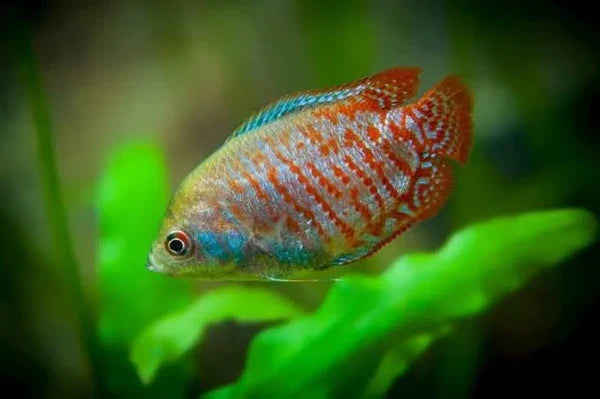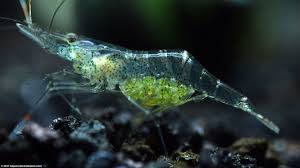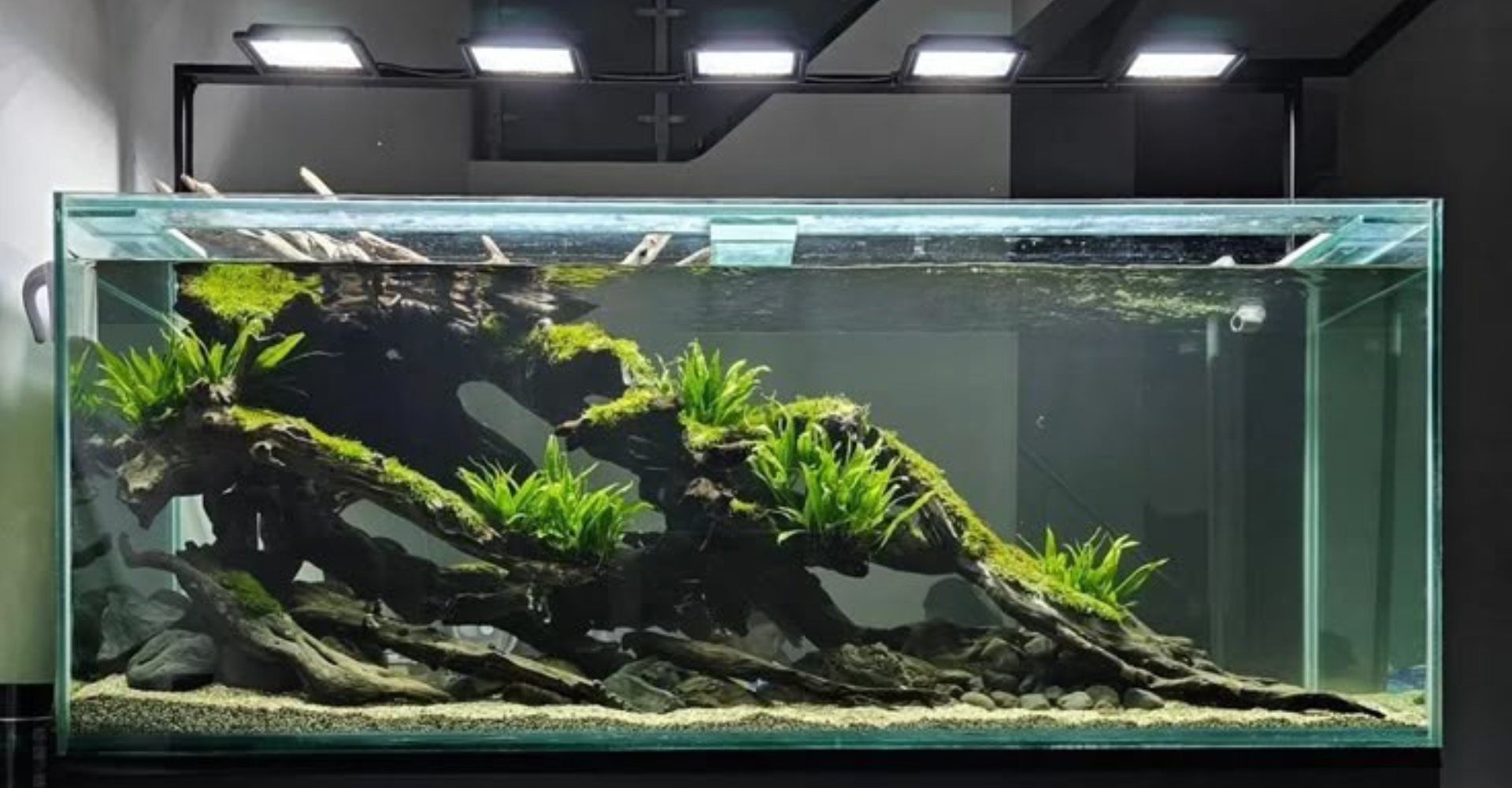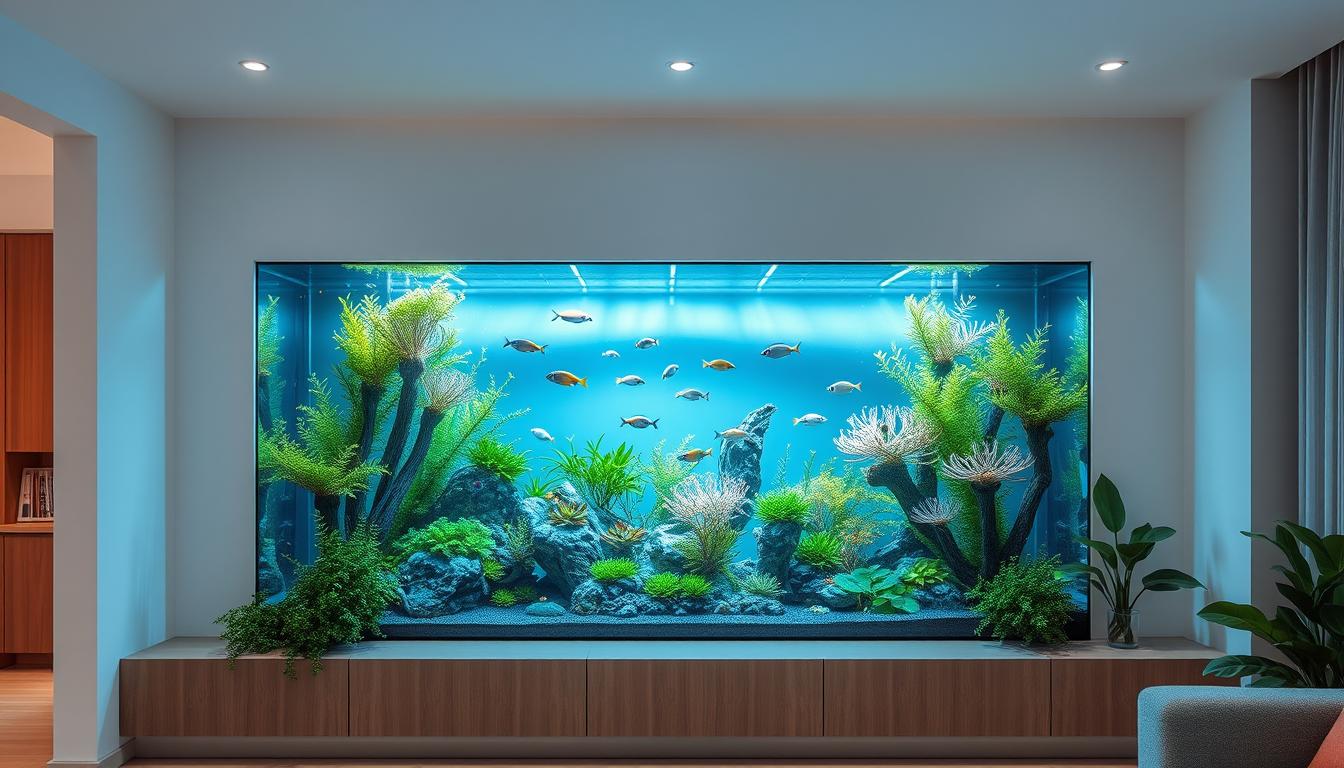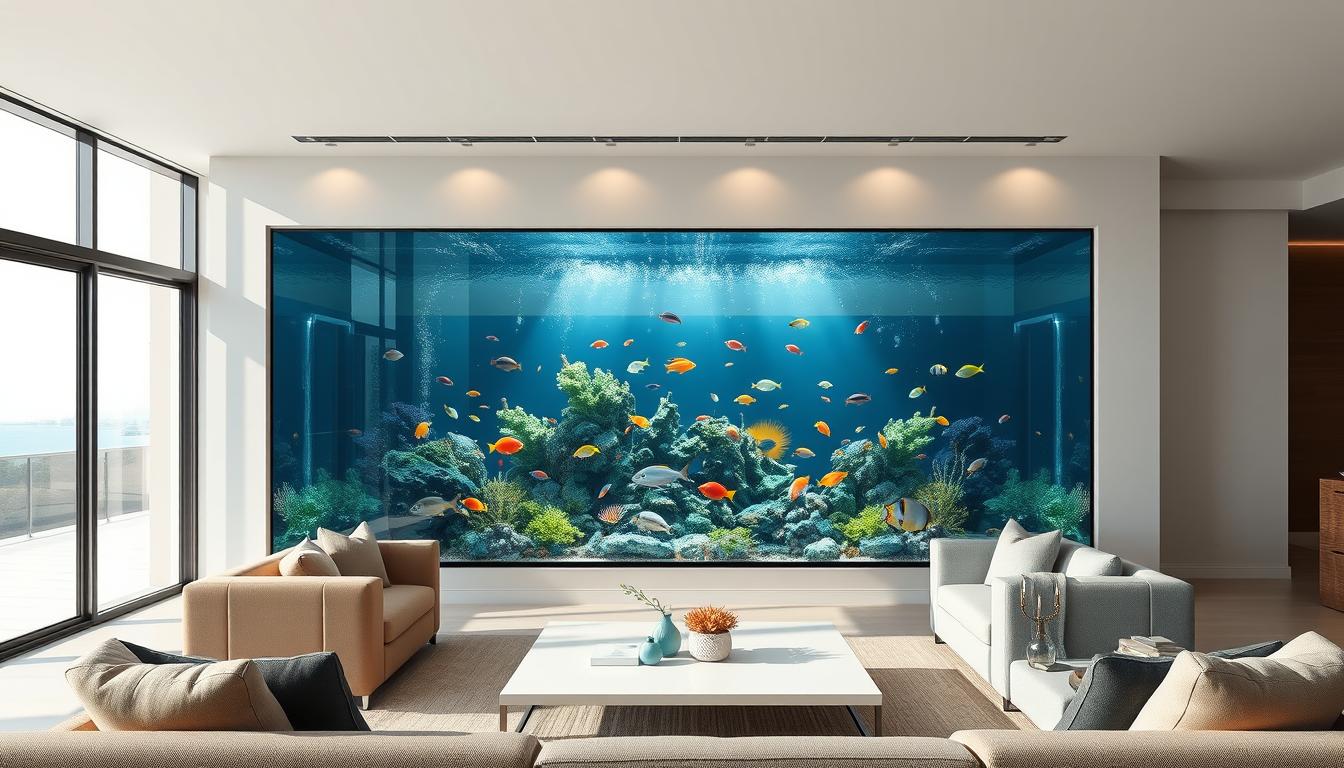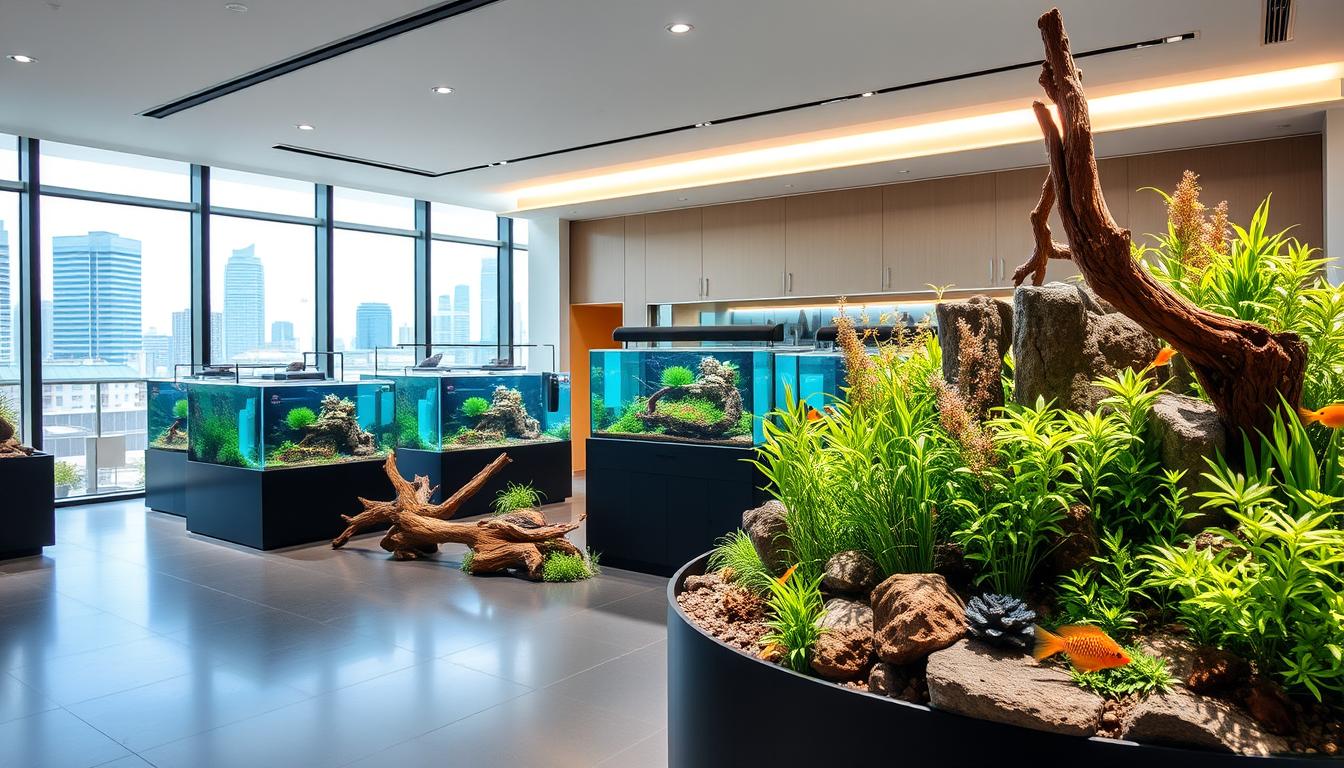
Besides the landscape and water source, the amount of food you put in the aquarium is also significant to healthy habitat for fish. More than just sprinkling some debris on the surface of the water a few times a day, there are many things you need to pay attention to to provide a healthy diet for your fish while still maintaining a good water environment in your aquarium...
Choose the right food.
With so many brands and types of fish food at the shop, how do you know which suits your aquarium? Many beginners must consider whether their fish will eat it before grabbing a jar with a fish label on the front.When staff gives them advice, they will feel overwhelmed because it is complicated.
Let's start with the most straightforward step, paying attention to the type of fish you want to keep, from which you can know whether the fish is a carnivore (carnivore) or a herbivore (herbivorous animal).
Dry food: flakes may be your first choice for fish food because of their cheap and widespread use, but dry food also comes in granules and pellets in the form of pellets—sink and float, as well as options for specific species. The aquarium shop may also sell dried spirulina or nori sheets, which are great for herbivorous fish. Feeding fish with dry plant-based food will help reduce the risk of bladder disorders and flatulence in herbivorous fish.

Pellets are another staple food for floating, slow-sinking (or semi-floating) fish. Since they are hard, do not dissolve immediately in water, and do not break easily, you should choose the right size so your fish can easily swallow whole. Some of our favorite pellets include community fish, small fish nano, and floating betta fish pellets. If you've ever seen a betta eat it several times and then spit it out, it's probably because the pellets are too big to swallow.
Frozen food: Some fish prefer frozen food, such as shrimp, bloodworms, plankton, krill, or mussels. Aquarium shops also often sell rigid spirulina blocks to feed herbivores.
Freeze-dried food: Tubifex worms and Mysis shrimp or other foods can be found in freeze-dried bulk form. They are very nutritious and great for predatory fish. Live foods include ghost shrimp, fry (for larger carnivores), crickets, and worms. Freeze-dried foods float to the surface and can be broken down into smaller pieces for easier consumption. Finally, unlike most raw or frozen foods, they can be easily stored on the shelf at room temperature.

Vegetable: If your fish is the type that likes to eat aquatic plants, such as anchors, feed them greens as well. Fresh vegetables include lettuce, cucumber, zucchini, and spinach.

Sponges and sticks containing a mixture of both meat and vegetables are designed to dissolve slowly in water. They are often given to herders who want to nibble or chew food for hours. This type of food is also a favorite of larger animals. Depending on your aquarium's eating habits, you may want to use a floating or sinking stick to make a "party" for your fish community.

Powdered feed is mainly for shrimp, fry, and small nano fish. The plus point of this powdered food is that it will float around the tank so the fry can feed without leaving their haven. Do not feed too much at once; divide the food, so your pet has time to digest it. Supplement your aquarium cleaning team with shrimp, snails, and catfish so they can assist you in cleaning up leftover food in the tank.

Suppose you have a community of many species of fish in your tank. Mix floating, slow-sinking, and fast-sinking foods to ensure they get the nutrition they need.
How much to feed?
Aquarists often fear their "pet" being hungry, so they will put a large amount of food into the tank instead of feeding it less and more often. When leftover food causes cloudy water, the concentration of ammonia, nitrite, or nitrate increases. This is also why you always wonder why the water in your aquarium is contaminated and must change the water constantly. Pay attention to adjusting how much food you feed your fish daily. To know more about “How to Do a Water Change (& Why It's Important!)”. Read here.
Adult fish can be fed once a day, at the same time, although you can feed them several times a day if you feed them a smaller amount each time. The fry may need three or four feedings per day. Herbivores usually don't have a large stomach to hold a lot of food, as in the wild, they graze on algae and plants throughout the day.

Adult fish can be fed once a day
They can be fed dry food and raw vegetables to snack on throughout the day. One piece of advice for you is that when adding some food to the tank if the amount of food is still there after five minutes, you should probably cut back on the amount of food put in the tank. An exception is for nocturnal (nocturnal) fish. Feed the tank in the evening before turning off the lights, and let the fish eat overnight.
Why won't my fish eat this food?
Fish are living animals with their preferences. Sometimes you can buy fish-specific food, or in some cases, someone else's advice the food matches your fish, but when you put it in the tank, they won't eat it. Here are a few suggestions we have for you:
Check the expiration date of the fish food. Many dry foods have a shelf life that lasts for many years. Still, when you open the container, the food begins to degrade due to repeated exposure to moisture and oxygen. If the food is rotten or spoiled, your fish may stop eating or get sick. To prolong the shelf life of food, do not stick wet fingers in the container, close the lid immediately after use and consider storing your dried fish food in the refrigerator or freezer.
Offer a variety of foods to ensure your fish community gets all the vitamins, minerals, and nutrients they need to thrive. In addition, you should train your fish to eat at least one type of dry food that will help you use the automatic fish feeder, or it will be easier if you are away from home for a while.
Finally, suppose you are keeping a pet with special feeding requirements. In that case, the variety of foods you can provide, don't forget to give them vitamins and other supplements as needed. When fish are deficient in nutrients, their immune systems are compromised, and they are more susceptible to disease.
Feeding fish is part of the pet care routine. Choosing the right food and diet for your community aquarium is extremely important. This article provided information on the foods to choose the proper diet for your aquarium fish. This introduction to all the different types of fish food has inspired you to try something new for your aquarium tank.
If you want to know about the "Top 10 Aquarium Fish That Love Hard Water", read the article here.
Micro Aquatic Shop always provides ornamental fish, shrimp, and aquatic plants..... We put quality first. Check the list below or visit our website: https://microaquaticshop.com.au to receive a 15-20% OFF discount on the total bill. What are you waiting for?

